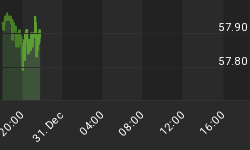Since I have received e-mail inquiries regarding silver stocks, I have decided to pen this piece on a general strategy for a silver company portfolio. This article assumes a long-term bull market in silver. By "long-term," I mean at least three years and possibly five years or longer.
I will focus the seven companies that make up the
Under the assumption of a long-term silver bull market, three factors standout in selecting silver miners.
Management Intent
Note that this is not "management," which is an all-inclusive term for the executive team's competency, integrity, and other factors. Consider the silver bear market in excess of two decades, it's hard to think of other market conditions that can represent better examples of survival of the fittest! It seems reasonable to assume that the current management team, at least for the larger companies, are competent, if not excellent. The lengthy bear market also present few, or no, surplus that can become window of opportunity to top management corruption. Think Enron and dot-coms. Usually it's the excess from lengthy bull markets that breeds corrupt, decadent corporate culture.
Management intent is a take on the extent of management's believe in the high probability of in-coming silver bull market. And, more importantly, to what extent is the management molding that assumption into action. For this factor, the first concern is the extent of a silver miner's hedging and leasing activities. Many have written and spoken, very eloquently, the potential damage and seriousness of gold and silver companies' hedging/leasing, which I don't need to repeat. With this concern in mind, one nice trick to discern constructive management intent is to look for silver miners that have acquired physical silver or withheld part of their silver production. Either of these two actions illustrates in management's assumption of and commitment to the long-term silver bull market. They also have the added benefit of steadily forcing silver up to equilibrium price level. Both Jason Hommel and Ted Butler had penned fine articles to promote these two actions.
Currently, PAAS and Penoles are widely known among the investors to actively hedge and/or lease silver. Also currently, SSRI is the only large cap that had announced (on
Ounces in the Ground
Jason Hommel had made this methodology currently the most popular strategy to select silver miners. I highly recommend investors who plan to include silver miners in their portfolio look up Hommel's website. This methodology is self-explanatory. Buy the company with the most ounces of silver per dollar you put into that miner's stocks. At this point, SSRI has the highest silver content per dollar in the seven large caps.
Juniors versus Large-Caps
In my opinion, this is a tough call.
Juniors have better value, in that investors receive more ounces per dollar invested. However, they are more volatile, since they are thinly traded. Even relatively small orders can push prices significantly in either direction. Therefore, juniors are probably best for long-term holdings as oppose to trading.
In addition, long-term investment in junior silver miners can have one potential problem. Investors buy small company for its better silver value. As the bull market progresses, mergers and acquisition in the silver sector may heat up. Large caps may attempt to takeover the juniors with good value to augment their silver resources/reserves. If this were to occur (and I think it's quite likely), investors' purpose of buying value in juniors may be compromised.
Conclusion
Personally, I like to stay conservative and focus on the large cap silver miners at this point. I think there's still good chance that good juniors may be taken over, provided the large cap of interest has management intent to actively pursue a strategy complementing long-term silver bull market; with high existing resources and/or reserves as nice pluses. Given the three factors discussed in this article, my current favorite large cap is SSRI.
As for junior miners, I think serious silver investors with relatively large portfolio may want to take closer look at them.
















